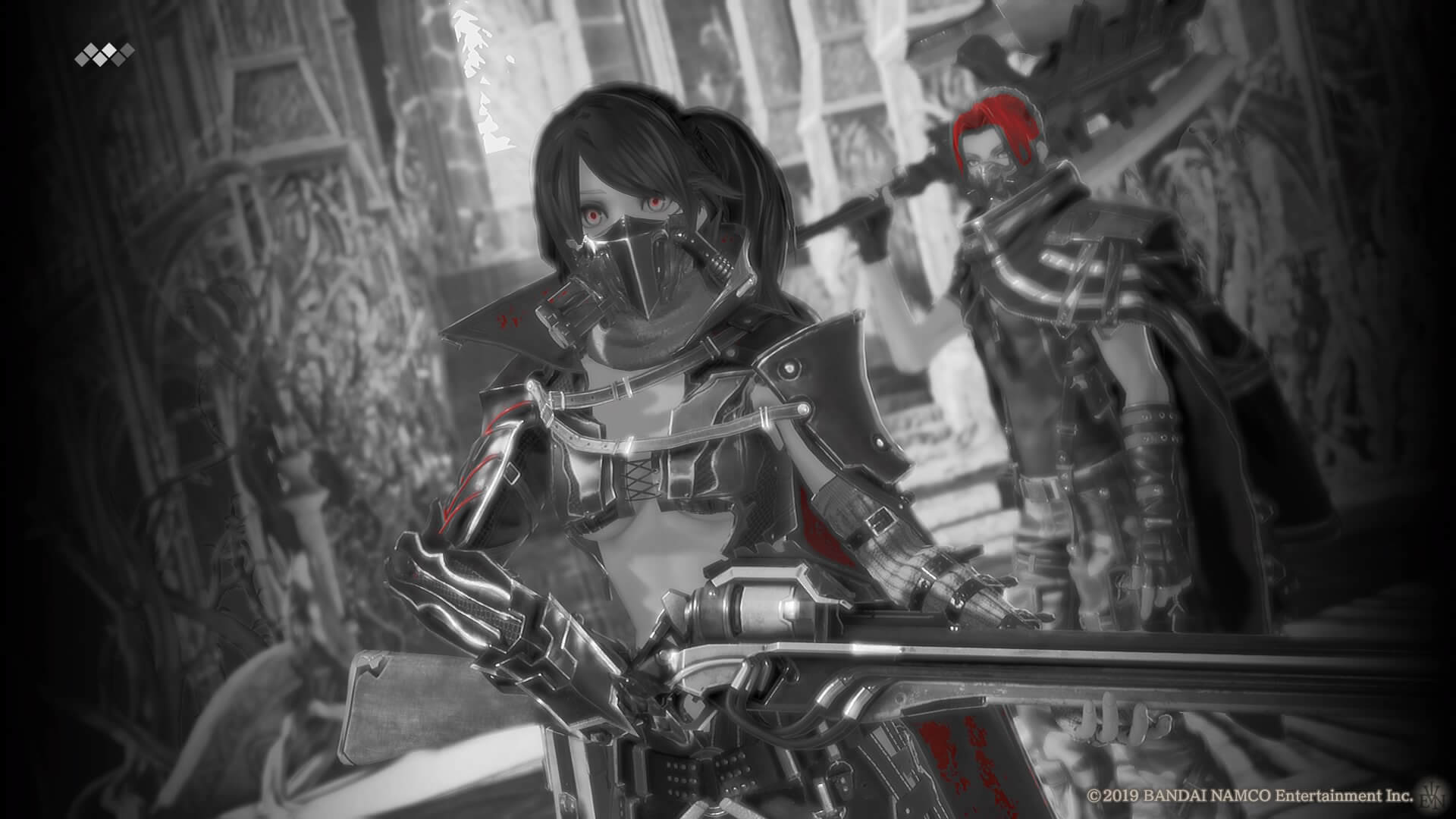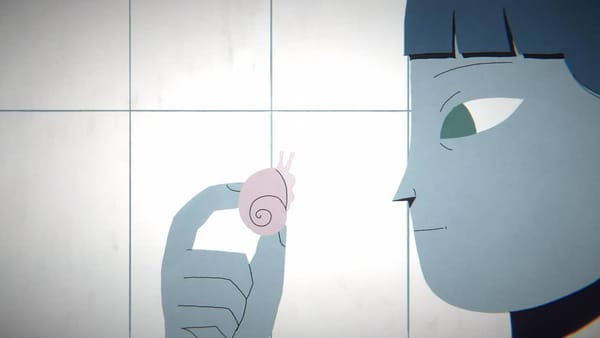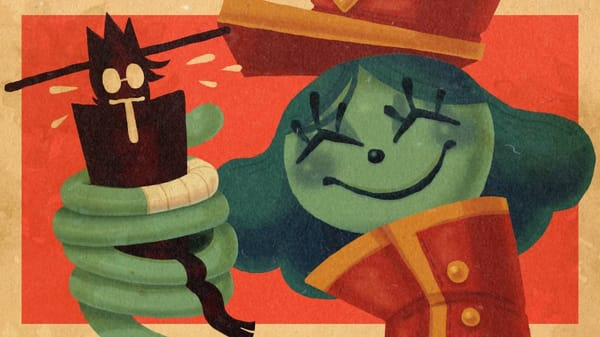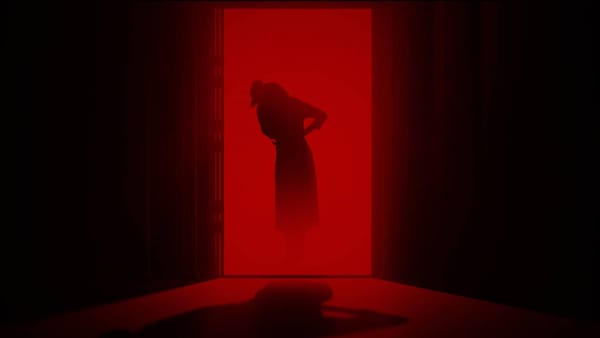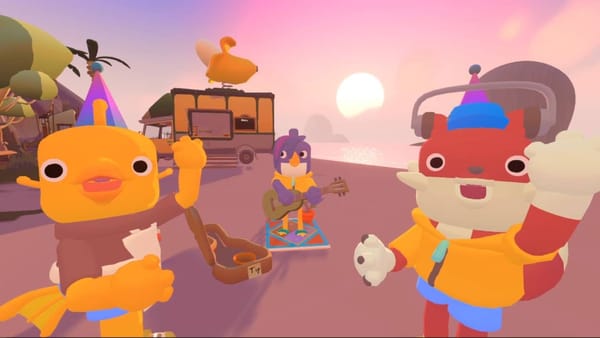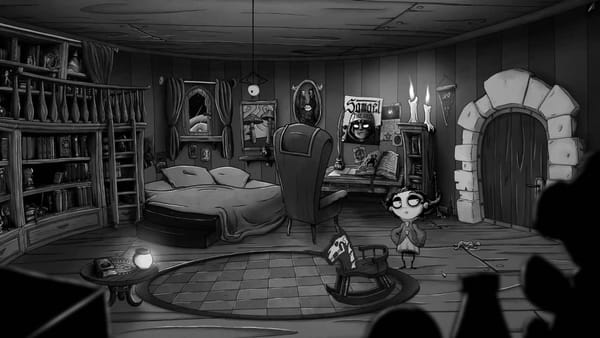The hype train for Code Vein didn’t pass through Vulgar County when it first came out, mostly because this place was exclusively Switch reviews and due to the whiff of ‘Dark Souls’ clone. Therefore, there were zero expectations.
The story follows a bunch of modern-day vampires known as revenants… blood codes…evil queen…save the world… Code Vein, from Bandai Namco, is a typical story of good versus evil, exploring the lore and accessing the memories of NPCs. You’re creepy like that. There’s much more to the narrative, but let’s go to the gameplay.
Code Vein has the same mechanics as Dark Souls and Bloodborne, we all know that, but it’s much more forgiving. For starters, you have an AI character that accompanies you, but can be dismissed if you’re a Billy-no-mates. Their primary function is to assist in combat, but they’ll also point out items, give advice and incessantly nag or look at a ladder and say “I think we can use this”.

We’re Not In The Skynet Era Yet
The AI for your partner is a bit hit and miss. Sometimes they can be aggressive and snipe enemies from a distance with a couple of hits, other times they’ll stand still or Leeroy Jenkins into a mob. There are numerous characters to choose from, but I switched between two.
My go-to guy was Yakumo, a knucklehead whose sword makes Cloud Strife’s look like a toothpick. He’s a bit of a tank and can stagger enemies. The other option was Io – an indifferent vocal talent that makes you lose all enthusiasm, but should you die mid-battle, she can sacrifice her health and bring you back with more health that other members can. Secondly, she has a wicked ranged ice attack that’s pretty devastating.
Code Vein follows the blueprints for the common third-person RPG action-adventure as you can build a class based on your preferred style of play. Each class is represented by a blood code that you can switch to back and forth at each mistle you stop at. Mistles are like a bonfire; create a checkpoint, level up, switch out players – that sort of thing.
Bloody Roar
Blood codes are unlocked through story events or as collected items. These fragments are called vestiges, and each time you return to your base, Io will help you access the memories in the vestige, thus unlocking new abilities in your build. These include melee attacks, ranged and magic-based, which uses ichor, Code Vein’s mana.

From one-handed swords to halberds, Code Vein also has the classic two-handers such as the Zweihander. Ranged weapons are bayonets and have the weakest melee power, but are great for picking off characters to lure them in one at a time.
As per Bloodborne, you storm through a level picking off enemies one by one, collecting currency to level up, unlock new abilities and buy new gear. If you die (you will), whatever you’ve accumulated will remain until you go back and retrieve them. Die beforehand, and they’re lost forever.
I Wanna Hold Your Hand
Code Vein is much more accessible than the Dark Souls series and Sekiro: Shadows Die Twice. I’ve never had an issue with Dark Souls or Bloodborne, having completed them multiple times. That can’t be said for Sekiro: Shadows Die Twice and the reasoning behind that is it doesn’t allow for other players to join you.
Nobody reads the menus or instructions for games these days, but Code Vein could do with a bit more explanation. Though there’s a noticeboard in your base telling you your next task, it’s not always clear what to do next or the benefits of an item.
One feature I missed out until two-thirds of the way in was the multiplayer function. Familiar with other games where you have to use an item to request help, Code Vein doesn’t have this drawback. You can ask for help from players from the main menu (the options button), a request is sent, and if someone is available, they’ll join your game.

It’s much more clinical than other games as players enter your session, help you get past the boss then immediately disappear once the job is done. You can use emotes with one another, but it’s very to the point and just what Code Vein needs.
Doe-Eyed Girls
Code Vein is heavily stylised, features cinematic sequences throughout, including in-game backstabs. There is the option to turn these off, but I never tired of these, and it added to the overall experience.
As you’d expect from the stereotype anime style, the female characters are often doe-eyed, wearing next to nothing and have an anatomy only a teenage boy could envisage as ‘that’s what women look like’. Get over that side of things, and the character models and animations are fantastic. Then you go and talk to the plank Io, a.k.a. Tits McGee and you’re in Kleenex territory again.
In summary, Code Vein is much more accessible than Souls-like games.
Character customisations are pretty decent. Aside from the physical attributes, there is a range of blood veils – your revenant’s armour, that pimp your player cosmetically and with buffs. There are a few other extras such as trading items with your team to unlock items, social gear and signature weapons, but this aspect is more of a grind as the trading items are quite scarce. Without reading a guide, you never know who wants what.
Have A Heart
While easier than its counterparts, expect to grind in Code Vein for a few levels. Though even at a high level, enemies can knock you off the edge for insta-death, or take off half your health in one hit, so there’s no time to get overly cocky.

My biggest criticism isn’t the difficulty, but the ambiguity of what to do next. There are a lot of times where you’ll aimlessly wander around going over the same path only to find the main route is what would be deemed as a secret route in any other game.
Another aspect was the frequent story interruptions. As an advocate of decent narratives, I was surprised to find that I was skipping the odd dialogue sequence – usually the vestige memories you unlock. Despite this, I was able to catch up with the story, no problem. The cut sequences are good and all, but sometimes the Dark Souls ambiguous approach is better – showing, not telling.


